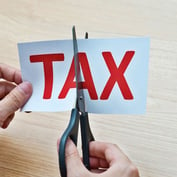As Tax Day — April 15 — draws closer, WalletHub, a personal finance website, looked at what percentage of income that high, medium and low earners across the country spend on sales and excise taxes, property taxes and income taxes.
WalletHub generated estimates of the state-specific tax burden on residents at three income levels — low ($25,000), medium ($50,000) and high ($150,000) — in each of the 50 U.S. states and the District of Columbia. Researchers used data from the Institute on Taxation and Economic Policy’s 2024 report, which published tax burden estimates at seven points in the state-specific income distribution.
In order to compare tax burdens for households at the same income level across states, the researchers fit a regression model to estimate the relationship between income and tax burden for each state and the District of Columbia. They used log transformations to improve model fit and deployed this model to generate predicted tax burdens at the income levels they examined.
The share of income that taxpayers contribute toward tax obligations varies by state. In most states, low- and middle-income families pay a greater share of income than do wealthy families. This regressive effect owes in part to the absence of a graduated personal income tax in many states and a reliance on consumption taxes.
Still, in a dozen states, the tax burden on high earners is onerous. It’s also worth noting that in half of these states, low earners put out the lowest amount of money in taxes.
See the accompanying gallery for the 12 states in which high earners pay the biggest percentage of their income on taxes, according to WalletHub.







 March 01, 2024 at 02:11 PM
March 01, 2024 at 02:11 PM
























 Slideshow
Slideshow





